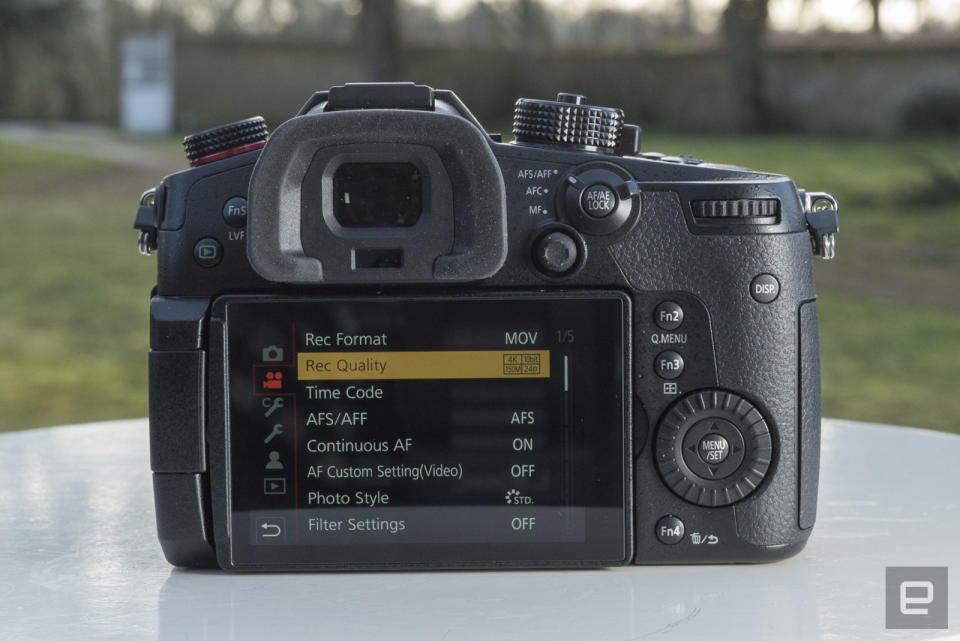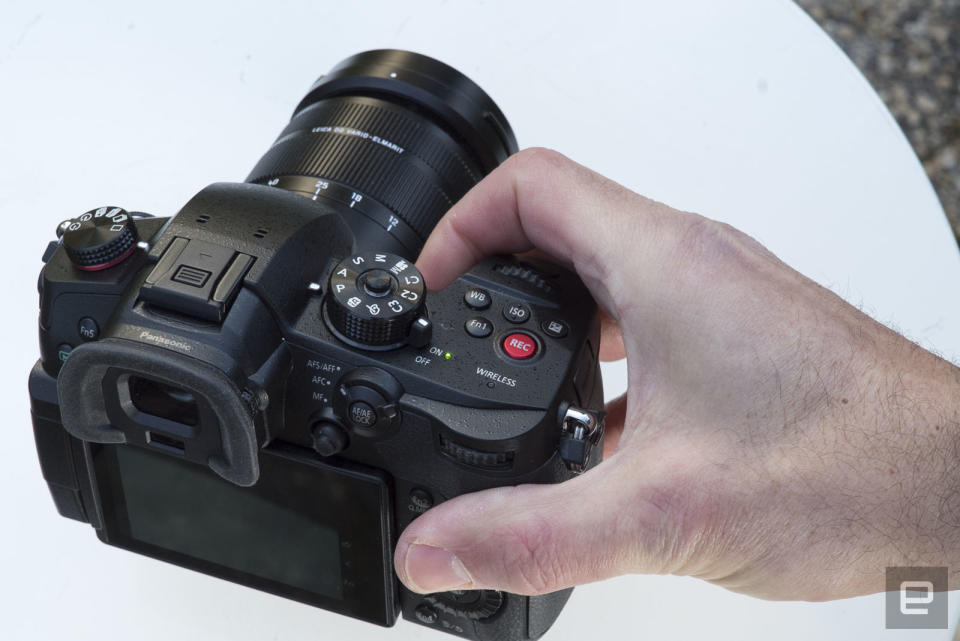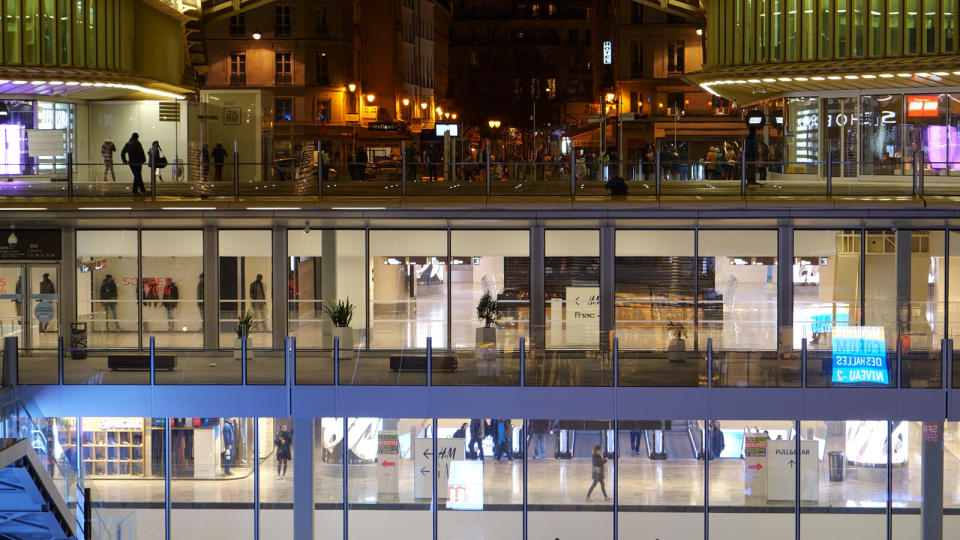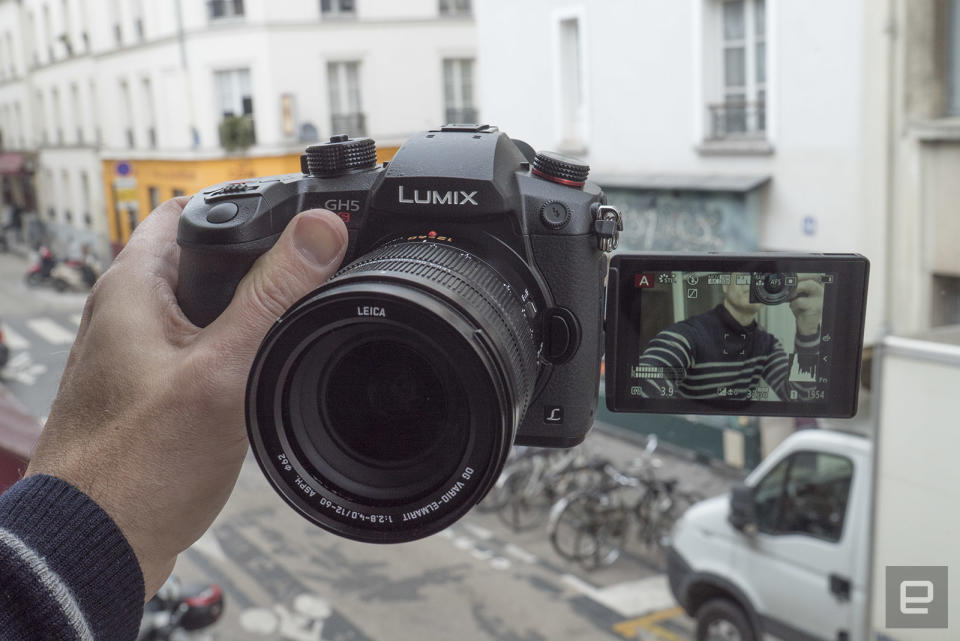Panasonic’s GH5s is perfect for video shooters and no one else
No stabilization and relatively low-resolution images are deal-breakers for photographers.
Panasonic was the first company to embrace mirrorless camera video, with the GH1, helping to change the way low-budget movies could be made. Finally, videographers had a (reasonably) large sensor camera that could handle autofocus, external microphones and 1080p video. The company raised the bar with each subsequent model, introducing 4K video with the GH4 and internal 10-bit 4K with the GH5. With the launch of the GH5s, however, Panasonic made a gutsy move by launching a mirrorless camera that prioritizes video in a way that none of its rivals have. As a fan of large-sensor video, I was curious to test it out, especially for low-light shooting. My conclusion? It produces the best video of any mirrorless camera on the market. But many folks considering it -- like documentary makers, event videographers and vloggers -- will likely prefer the GH5, which has built-in stabilization and costs $400 less. The heart of the difference between the GH5 and the GH5s is the sensor. Panasonic reverted to the old days of the GH1 and GH2 by using a multi-aspect sensor with an optical low-pass filter (OLPF). It has a true 10.2-megapixel resolution, the perfect size to capture DCI Cinema 4K (4,096 × 2,160) without pixel binning or line skipping. While that ensures crisp, sharp video, it means that it actually has a lower resolution than an iPhone for photos. The GH5s is also missing the GH5's in-body stabilization (IBS), a big negative for photographers. That might be because many video shooters don't rely on that for handheld shots. It simply doesn't smooth things out enough and can cause unwanted lag and glitches in pans, dollies and other camera moves. It can do that even if you turn it off, because in cameras with built-in IBS, the sensor is never rigidly fixed. Reducing resolution and eliminating stabilization has further benefits. With larger pixels, the sensor can gather more light, making the GH5s a better night shooter than the GH5. That's further aided by the "dual native ISO" design, which allows for less noisy video at higher ISO settings. And with no bulky stabilization electronics around the sensor, it has a slightly wider field of view than its photo-centric sibling, with a 1.8x crop factor instead of 2.0x for DCI 4K. That's a huge plus, considering that Micro Four-Thirds is the bottom rung in sensor sizes, as compared with full-frame and APS-C -- the more you can get out of it, the better. Also, with a multi-aspect sensor, the field of view is the same regardless of which aspect ratio you choose, including for 17:9 Cinema 4K (DCI). For video, the GH5s can't be touched. You can shoot 4,096 x 2,160 at up to 60 fps, with 10-bit (a billion) colors and professional 4:2:2 color subsampling. Choose between long-GOP, MPEG-type codecs at up to 150 Mbps or, for easier editing, ALL-I, frame-by-frame video at a stellar 400 Mbps. All of that jargon means that you can grab very high-quality, HDR video and change it substantially afterwards. Aiding that further is the "VLog-L" color profile, which will give editors the maximum dynamic range to tweak colors. (That was available on the GH5 too but cost around $100 extra.) If slo-mo is more your thing, the GH5s can capture DCI 4K at reduced 8-bit, 4:2:0 quality levels at up to 60fps, or 1080p at a time-stopping 240 fps. No other mirrorless or DSLR cameras, including models like Sony's A7R III and the Nikon D850, offer 4K with 10-bit internal recording. That's a shame, because Sony's large-sensor cameras offer a much different look for video than the GH5s, but the lower recording quality limits their usefulness for video. If you want to relate it to stills, it's like offering only JPEGs instead of RAW. There are a few other changes from the GH5. The GH5s supports 14-bit RAW photos, better than the 12-bit GH5, so there is that nod to photographers. The GH5s retains the GH5's 3.5mm microphone input, but it supports phantom power and line levels so that you can use professional microphones. The EVF runs at a faster 120fps, and picky cinema folks can even output images with look-up table (LUT) presets. Oh, and there's that "REC" button, colored bright red so you don't mix it up with the shutter release, and to differentiate it visually from the GH5. Now that you know about the GH5s' specs, what's it like? Let's get one thing out of the way: The GH5s is a great video camera and a joy to use. I shot with both it and the Sony A7S II together at a couple of events in Paris to get a feel for the handling and image quality. Panasonic's menu system is much better than Sony's. All video settings are stored in one place, so it's easier to find things like the audio level adjustments. The GH5s also offers video scopes, a "shutter angle" option, waveforms, zebras, focus peaking and other videography aids. There's even a "focus transition" that lets you select up to three focus zones and switch between them while you shoot. It's a poor man's focus puller that works very well, as long as you don't bump the camera when using it. (Panasonic needs to add this to the remote function for manual operation, to prevent vibrations.) If you're familiar with the GH5, there's not a lot of difference in handling, as the GH5s has an identical body and menu structure and the same controls. The biggest change that might affect how you work is the lack of IBS. That forces you to rely on a tripod, dolly or external stabilizer like DJI's Ronin, unless your hands are steadier than mine. Ironically, the small form factor, flippable screen and video features should make the GH5s perfect for run-and-gun shooting and vlogging. But without stabilization, those things are made more difficult. Panasonic probably had to ditch it to include the multi-active sensor, but if you really need IBS, it's still supported on most of Panasonic's Vario lenses, among others. The GH5s' two main rivals for video are its sibling, the GH5, and the Sony A7S II. If you do photos and video equally, you might also consider the Canon 5D Mark IV and Sony's brand new A7R III. As others have noted, the GH5s crushes the GH5 in low light, with substantially reduced grain at higher ISO settings. That's a result of the larger pixels and dual ISO on the 4K-optimized sensor. The GH5s produces very clean video at ISOs as high as 6400. It also looks good beyond that, up to 25,600 (max ISO is 208,000) but the noise reduction is more aggressive. Beyond 25,600, video starts to get unusable. Against the Sony A7S II, it's more complicated than just noise and ISO. Panasonic itself clearly sees that model as its main competition, as the company showed journalists a number of A7S II comparison videos during the launch. Here's the thing: The A7S II does have less noise in low light, but even then, I'd rather use the GH5s (to a point). For instance, I shot a concept car in 4K with moderate lighting, using ISOs in the 1600-3200 range. There was no real difference in noise, but the output from the GH5s looked richer, with better colors and more detailed blacks. That's likely down to the higher quality, 10-bit, 150 Mbps 4:2:2 codec, compared to the A7S II, which records internally at 8-bit, 100 Mbps, 4:2:0. Cranking it beyond 6400, Sony's A7S II has increasingly lower noise than the GH5s. But again, the GH5s appears to have better color and blacks. So you have to decide which of those things you want, and for me, a little more noise isn't a huge deal, but muted colors and muddy blacks are. At the upper ISO ranges, the GH5s can't hold a candle, as it were, to the A7S II. The latter camera is arguably usable up to 204,800, at which point the GH5s video falls apart completely. However, it's mostly an academic exercise at that point, as folks rarely, if ever, need to shoot in pitch black. Sony's camera can pull that off because its much larger sensor has pixels with an 8.4 micron pitch, while the GH5s pixels are 4.5 microns -- nearly half. That brings up another key advantage of the A7S II: The full-frame sensor is a big draw for videographers looking for more bokeh and narrower depths of field. It's not just an arty trick with video, but an important tool for, say, shifting focus from one subject to another. At the same time, sometimes you need a deep depth of field for video, and a smaller sensor actually helps there. On the A7S II, you might need an aperture setting of f/4.0 to keep items in a scene in focus, compared to f/2.8 on the Panasonic. In that case, the Sony loses some of its low-light advantage. A few other things: Sony's A7S II has a bad reputation for rolling shutter, aka jello effect, especially at 4K. Panasonic claims the GH5s reduces rolling shutter by 25 percent compared to the GH5, which was already better than the A7S II. And again, if you need to shoot slow motion or high frame rates, the Panasonic is the only game in town for 4K at 60fps and can manage the feat in DCI 4K, which Sony doesn't even support. While this review is video focused, I have a few observations about taking photos with the GH5s. 10.2 is not a lot of megapixels; four by three photos are 3,680 x 2,760 in size, which seems comically small compared to, say, the 42.4-megapixel Sony A7R III. As such, it simply won't do for landscape, portrait and other photographers. On the other hand, my photos were plenty sharp (using Panasonic's excellent Leica 12-60 f/2.8-4.0 lens), and with 14-bit RAW, you can dig into shadows and highlights to recover detail. The contrast-detect AF, while still inferior to phase-detect AF from Sony and especially Canon, has never worked better than on the GH5s, I found. And when using center-weighted metering, most of my shots had perfect exposure. In sum, Panasonic has really done a great job targeting the video crowd with the GH5s. By switching back to a multi-active sensor, it squeezed the most out of the micro four thirds format, which should give pause to folks considering an APS-C model like the Sony A6500 or Fujifilm's new X-H1. It also blows away nearly every camera, save Sony's A7S II, in low-light performance. And even where it falls down there, the GH5s' excellent video codec and high bit rates can save the day. But will it convince Sony or even Canon 5D mark IV video shooters to switch? I'm not so sure about that. People who like large sensors would very reluctantly go down to one half the size in exchange for a more robust codec, in my opinion. And the GH5s is still limited to contrast detect focus. It seems to work a bit better for video than the GH5, but Canon's dual-pixel, phase-detect autofocus is the gold standard -- it's much faster and more reliable. It'll also be tough to get GH5 shooters on board. Many of those folks are not pleased about the lack of IBS on the GH5s, especially the vlogging crowd. At the same time, the GH5 is a great camera for general photography, but a 10.2-megapixel mirrorless that costs $400 more is a pretty tough sell, even with the GH5s' new 14-bit RAW mode.

































